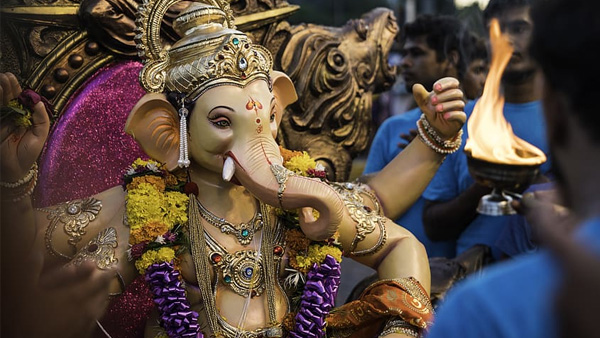
Ganesh Chaturthi, also known as Vinayaka Chaturthi, is one of the most popular and widely celebrated Hindu festivals in India. This auspicious occasion revolves around the worship of Lord Ganesha, the elephant-headed deity who is revered as the remover of obstacles, the patron of arts and sciences, and the god of new beginnings. The festival holds deep cultural and religious significance in India and is celebrated with great enthusiasm and fervor across the country.
Origins and History
The origins of Ganesh Chaturthi can be traced back to ancient India, with references to Lord Ganesha found in various Hindu scriptures. However, the modern form of the festival as it is celebrated today can be attributed to Bal Gangadhar Tilak, a prominent freedom fighter and social reformer in the late 19th and early 20th centuries. Tilak recognized the potential of Ganesh Chaturthi as a platform to bring people together and foster a sense of unity and patriotism during the British colonial rule.
In 1893, Tilak organized a public Ganesh Chaturthi celebration in Pune, Maharashtra, where he encouraged people from all walks of life to participate. This marked the beginning of the public and community-oriented celebration of Ganesh Chaturthi in India.
Significance of Ganesh Festival
Remover of Obstacles: Lord Ganesha is revered as Vighnaharta, which means the remover of obstacles. Devotees believe that by worshiping him, they can overcome obstacles and challenges in their lives, both spiritual and material.
Patron of Arts and Sciences: Ganesha is also considered the patron of arts and sciences. Many artists, writers, and scholars seek his blessings before embarking on a creative endeavor, hoping for success and inspiration.
New Beginnings: Ganesh Chaturthi is associated with new beginnings and is often seen as an auspicious time to start new projects, ventures, or even a new phase of life such as marriage or education.
Community Bonding: The festival brings communities together. Public celebrations involve elaborate processions, cultural performances, and the immersion of idols in bodies of water, fostering a sense of togetherness among people.
Environmental Awareness: In recent years, there has been a growing awareness of the environmental impact of the festival due to the immersion of idols made of non-biodegradable materials. Efforts are being made to promote eco-friendly celebrations.
Celebrations
Ganesh Chaturthi is typically celebrated over a ten-day period, with the most elaborate festivities taking place on the first and last days. Devotees install clay idols of Lord Ganesha in their homes or community pandals (temporary shrines). These idols are adorned with flowers, jewelry, and various offerings.
Daily rituals, including prayers, aarti (rituals involving fire), and bhajans (devotional songs), are performed throughout the festival. On the tenth day, known as Anant Chaturdashi, the idols are taken in grand processions to be immersed in rivers or the sea, symbolizing the return of Lord Ganesha to his heavenly abode.
Conclusion
Ganesh Festival is not just a religious celebration but a cultural phenomenon that transcends boundaries. It reflects the diversity and unity of India, bringing people from different backgrounds together to worship Lord Ganesha, seek his blessings, and celebrate the spirit of togetherness. As it continues to evolve with changing times, Ganesh Chaturthi remains a vibrant and cherished festival that holds a special place in the hearts of millions of Indians.

Leave a Reply